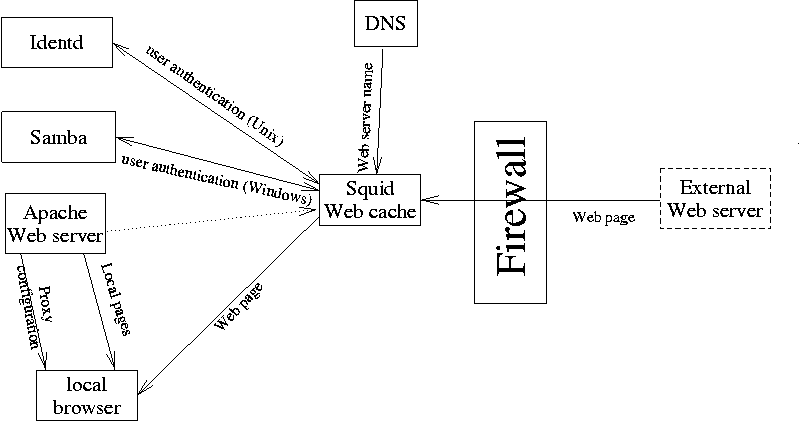

Web browsing involves the following subsystems:
Tasks:
This contains the school's own webpage, and the pages of the students. Moreover, it contains the browser's "automatic" proxy configuration, which is stored in /home/admin/public_html/proxy.pac. Moreover it serves empty images/empty java scripts for certain blocked ad servers (such as ad.doubleclick.net). This block works by having the DNS answer www.ltnb.lu's rather than advertisement server's real address. These advertisements are blocked for two reasons: